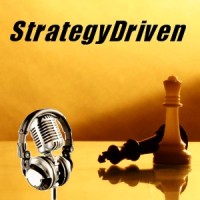The 2010 Execution Round-Up: Six Companies That Couldn’t ‘Get It Done’ This Year (and Two That Did)
No doubt about it: 2010 saw its share of losers (and the occasional winner) in the business arena. Here are a few of this year’s headline makers and the lessons that can be learned from each of them.
It’s that time of year again: time for business owners and senior executives to take stock of the past twelve months. What did 2010 look like for you and your company? Did you struggle to regain your post-recession footing? Were employees engaged and focused? Are financials on track? The questions you could ask during your year-end assessment are endless. But there’s only one that really matters: Did your company effectively execute its plans and initiatives?
If an organization can’t get things done, nothing else matters – not the smartest strategy, not the most innovative business model, not even game-changing technology. And for many companies, there is a clear gap between intent and execution – we’ve seen plenty of evidence this year.
This assertion is backed by hard evidence. Recently, my company, OnPoint Consulting, conducted a study of over 400 companies. We found that 49 percent of the leaders surveyed in the study reported a gap between their organization’s ability to formulate and communicate a vision and strategy and its ability to deliver results.
This wasn’t the surprising part, though. What really shocked us was that only 36 percent of leaders who thought their company had an execution gap had confidence in their organization’s ability to close the gap between strategy and execution. That means a staggering 64 percent of leaders who saw an execution problem didn’t believe their company could fix it.
My research uncovered five characteristics and competencies, which I call ‘The Five Bridges,’ that enable people to traverse this execution gap. It is these bridges that differentiate the companies that are consistently able to get things done from those that aren’t. (I call the former ‘Gap Closers’ and the latter ‘Gap Makers.’)
Of course, time has marched on since the book was written, and plenty of other well-known companies have dropped the execution ball in the meantime (BP in the most spectacular fashion). To help the rest of us learn from the ‘living laboratory’ of real-world companies, I present the following lists – the first lamentably longer than the second!
OnPoint Consulting’s 2010 Execution Gap Maker Round-Up…
Execution Gap Maker #1: BP (Need I say more?)
It’s obvious from recent events that BP experienced an enormous execution gap. (More like a chasm, really.) Had the company focused on recognizing and closing that gap, it would have prevented this year’s unprecedented disaster. While the oil spill is a complex and tragic event, the cause can be traced back to BP’s failure to build the critical bridges.
Leading up to and after the oil spill BP violated almost all the guidelines of effective execution, including lacking an effective structure and lacking clear accountability. These gaps created another problem for them: In the critical stages following the spill, BP was unable to get input from those who had the knowledge and experience to make the best decisions about how to handle it.
What’s more, BP failed to empower people to use their best judgment and take appropriate action. Consider that hours before the explosion the rig crew was arguing about the best way to finish the oil well and move the rig to the next site. A Transocean mechanic testified that he overheard a ‘company man’ telling rig workers ‘how it’s going to be,’ and that although the rig workers felt the plan was too risky, they reluctantly agreed. And just after the explosion, as workers were scrambling for safety, a worker was yelled at by the captain (who worked for the rig’s owner, Transocean) for pressing the distress button without authorization, and when another worker was asked if he had called to shore for help, he said he had not because he did not have permission to do so.
The BRIDGE that failed: Employee Involvement in Decision Making… among others.
The LESSON: In order for any company to execute successfully, the right people have to be involved with the right decisions. BP provides a devastating example of what can happen when this isn’t the case.
Obviously, this lesson is even more critical when there is as much at stake as there was in the BP disaster. But really for any company trying to gain footing in a constantly changing business environment and tough economy, empowering the right people to make the right decisions can be the difference between landing that next great customer or account or not.
Execution Gap Maker #2: Nokia
Nokia’s share of the worldwide market for mobile phones continued to slip in 2010. It may surprise you to learn that about five years before Apple introduced the iPhone and three years before it launched an online applications store, Nokia was ready to introduce its own Internet-ready touch screen handset with a large display and had an early design of an online applications store. So what happened? Why was this once-dominant player unable to execute and maintain its market position?
It appears Nokia was not able to coordinate decisions and activities across departments or levels of management. Many innovative ideas became the victims of in-fighting among managers who had competing objectives. Plus, as a result of a lack of cross-organizational coordination and cooperation, Nokia wasn’t able to improve its proprietary operating system, Symbian, which would have allowed it to support a more sophisticated smartphone.
Execution Gap Makers #s 3 and 4: The Federal Drug Administration (FDA) and the Agriculture Department
In August of this year, thousands of consumers became ill after eating eggs that were contaminated with salmonella. The discovery of the contamination resulted in over half a billion eggs being pulled from store shelves. How could something like this, and on this scale, have happened?
Much of the blame has been attributed to poor federal oversight. And the cause appears to be a significant lack of coordination across federal agencies. You see, the responsibility for food safety is split between two agencies: The Agriculture Department is responsible for chickens, the grading of eggs for quality, and regulating liquid eggs that are used in industrial food production. But the FDA oversees the safety of eggs still in their shells.
So who inspected the Iowa farms to make sure the eggs were safe for human consumption? It turns out that no one did. It just fell through the cracks. The lack of coordination between these two agencies is one reason why so many consumer advocates believe we suffer from a dysfunctional food safety system.
The BRIDGE that failed for Gap Makers #2, 3, and 4: Company-Wide Coordination and Cooperation.
The LESSON: It’s critical that organizations learn to coordinate and collaborate decisions across organizational boundaries. But doing so requires more than faith and words alone.
Shared goals and clearly defined roles provide the foundation upon which cooperation and coordination can be built. In addition, people must be held accountable for results. This requires a combination of direct leader behavior and systems that encourage and reinforce the appropriate behavior among employees.
Execution Gap Maker #5: Johnson & Johnson
It’s been a bad year for J&J. Since 2009 McNeil Consumer Healthcare, the J&J division that makes over-the-counter drugs, has had eight recalls, including popular children’s versions of Tylenol, Motrin, Benadryl, and Zyrtec. Most disturbingly was what has been called the ‘phantom recall,’ in which contractors hired by J&J carried out a scheme to buy every package of Motrin by going store to store without informing the FDA.
Poor execution doesn’t happen overnight. It can often be traced back to a pattern of behavior that gradually erodes a company’s ability to deliver consistent high-quality results. At J&J it may go back to 2005 when employees reported a lack of alignment between manager behavior and company values and policies. When one million bottles of St. Joseph aspirin failed a quality test after a sample did not dissolve properly, quality workers who blocked the distribution of the bottles claimed their supervisor ordered them to retest the drugs and then average the scores to get a passing grade.
Fortunately, there was not a problem with the batch that was released, but it appears that the misalignment of leader behavior with company values in this situation laid the foundation for poor execution, and a potentially dangerous situation, in the future.
The BRIDGE that failed: Alignment Between Leader Actions and Company Values and Priorities.
The LESSON: Leader behavior must be aligned with company objectives and values. While this phrase has been said so often that it’s become a cliché, companies can’t afford to ignore it.
You don’t really understand how important value alignment is or the impact it has on effective execution until you see what happens when it’s not there. That’s why stories like the Johnson & Johnson one are so important. They remind us not to take it for granted or assume it’s a ‘no-brainer.’
Execution Gap Maker #6: Toyota
During 2010 Toyota recalled millions of cars due to a variety of defects. This was an extraordinary number for a company once recognized for the quality of its vehicles. What went wrong? It appears Toyota’s decentralized structure, which served it well for many years, turned into a liability as the company continued to grow and dominate worldwide markets.
For example, some of Toyota’s former U.S. senior executives believe that keeping the U.S. operations separated in a functional structure – rather than reporting to a single headquarters – forced each to report back to Japan. This required customer complaints to first make their way through the U.S. operation and then over to Japan where they were reviewed by a special committee – which would then have to communicate back to the U.S. All this had to happen before a recall could be issued.
The BRIDGE that failed: A Structure That Supports Execution.
The LESSON: Make sure you have a structure that supports execution. A good structure enhances accountability, coordination, and communication. Plus, it ensures that decisions are being made as close to the action as possible. Toyota’s structure slowed down decision making and the company’s ability to effectively respond to the recall crisis.
The Toyota breakdown also illustrates that the five execution bridges are not permanent. In fact, they are quite fragile. Once you’ve built them, you must keep vigilant watch over them and work hard to maintain them over time. It’s quite possible for a company to have a bridge in place one year, only to discover that over time it has weakened or even crumbled and is no longer able to help your people traverse the gap.
…And Its Execution Gap Closer Round-Up
Execution Gap Closer #1: Netflix
Netflix received considerable media attention this year as it demonstrated its ability to successfully execute its strategy to provide video over the Internet. The company began streaming movies to TV-connected devices such as the Nintendo Wii, Microsoft Xbox 360, and a new Blu-ray Disc player, and the strategy is already showing signs of paying off. Although the ability to deliver streaming video has just recently become a reality, Netflix has been preparing to replace its original business model of delivering DVDs through the mail since the company was formed in 1997.
The company’s readiness for change is incredible. A decade before the technology was even a commercial reality, it recognized that the delivery of movies over the Internet would eventually replace mail. Even the name they chose for the company reflected this awareness. They named the company ‘Netflix’ and not ‘Mailflix,’ which would have been an easier concept to understand more than a decade ago.
Execution Gap Closer (Well…Maybe) #2: Barnes & Noble
I would like to classify Barnes & Noble as a success, but it’s just not clear yet whether the company really fits in that category. The move to electronic books has caused booksellers to take a close look at how they do business, but the jury is still out on whether Barnes & Noble’s response to the dramatic changes in the publishing industry will be successful.
Barnes & Noble appears to be doing a lot of the right things. It developed the NOOK and has devoted significant space in its retail stores to display and promote it, and it has a broad online library. The big question is whether the company is fully committed to this change. Will it turn out like Netflix and successfully make the transition to a new method of delivery? Or will it end up more like Blockbuster, which has struggled to adapt to new technology and shift from bricks-and-mortar stores to an online-based business model?
The BRIDGE that held for Gap Closers #1 and 2: The Ability to Manage Change.
The LESSON: The ability to manage change is critical. Yet, despite all the effort and resources that have been devoted to helping them achieve this, managers and organizations still often get poor marks in this area. That said, yet another change management process or program is not the solution.
Change is made one person at a time. And our research, as well as the research of others, indicates that successful change is connected more to the individual and collective mindsets of employees than any process. People change when they are ready – not just when they understand the need for change. The most successful companies facilitate change-readiness and don’t just rely on making the business case to drive people’s motivation to change.
Yes, as these stories illustrate, execution is the real bottom line and my constant battle cry. It’s what I push my clients to focus on as they seek to improve organizational performance – and it’s the lens I urge all leaders to look through as they review 2010 and make their ‘business resolutions’ for 2011.
Execution is not a single-point event. It’s an ongoing process. But since your ability to execute well and consistently is the very fabric of success, I can think of no better place to focus your time and energy.
About the Author

, is president of OnPoint Consulting, a management advisory firm specializing in helping clients close the gap between strategy and execution and create a culture of getting things done. His client list includes Bayer Pharmaceuticals, Citibank, Coca-Cola Company, ConocoPhillips, Goldman Sachs, Johnson & Johnson, NYSE Euronext, PeopleSoft, Prudential, and Subaru of America, among many others. In addition to writing Closing the Execution Gap, he has co-authored four books on leadership including Flexible Leadership: Creating Value by Balancing Multiple Challenges and Choices
, The Art and Science of 360 Degree Feedback
, The Art and Science of Competency Models: Pinpointing Critical Success Factors in Organizations
, and Virtual Team Success: A Practical Guide for Working and Leading from a Distance
.

 “The happy people are those who are producing something; the bored people are those who are consuming much and producing nothing.”
“The happy people are those who are producing something; the bored people are those who are consuming much and producing nothing.” Jonathan Hornby, a Senior Marketing Manager at SAS, is a visionary and thought leader in the field of performance management. His experience comes from a hands-on background within the banking sector of the United Kingdom, followed by extensive travel, dialogue, and collaboration with customers, management consultants, and respected thought leaders around the world. To read Jonathan’s complete biography,
Jonathan Hornby, a Senior Marketing Manager at SAS, is a visionary and thought leader in the field of performance management. His experience comes from a hands-on background within the banking sector of the United Kingdom, followed by extensive travel, dialogue, and collaboration with customers, management consultants, and respected thought leaders around the world. To read Jonathan’s complete biography,  StrategyDriven Podcasts focus on the tools and techniques executives and managers can use to improve their organization’s alignment and accountability to ultimately achieve superior results. These podcasts elaborate on the best practice and warning flag articles on the StrategyDriven website.
StrategyDriven Podcasts focus on the tools and techniques executives and managers can use to improve their organization’s alignment and accountability to ultimately achieve superior results. These podcasts elaborate on the best practice and warning flag articles on the StrategyDriven website.
 Gail Martin, author of
Gail Martin, author of  Joanne Cantor, PhD, is an internationally recognized expert on the psychology of media and communications. She is Outreach Director of the Center for Communication Research at the University of Wisconsin–Madison, where she was an award-winning professor for 26 years. Through her consulting firm,
Joanne Cantor, PhD, is an internationally recognized expert on the psychology of media and communications. She is Outreach Director of the Center for Communication Research at the University of Wisconsin–Madison, where she was an award-winning professor for 26 years. Through her consulting firm,